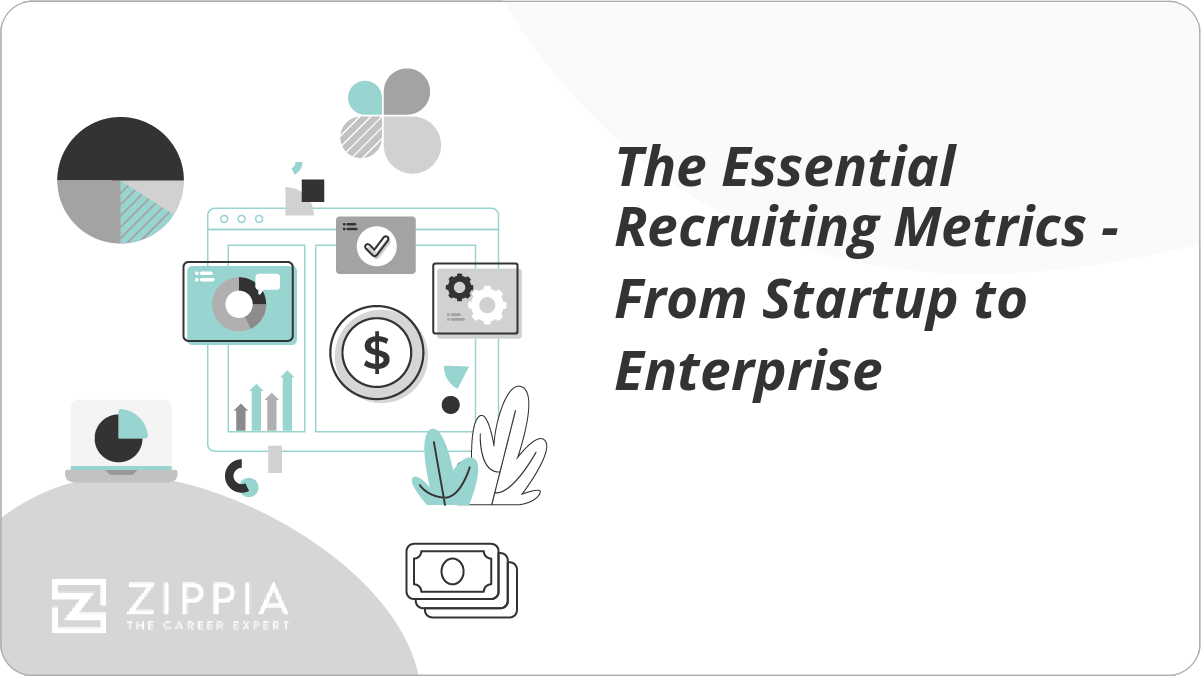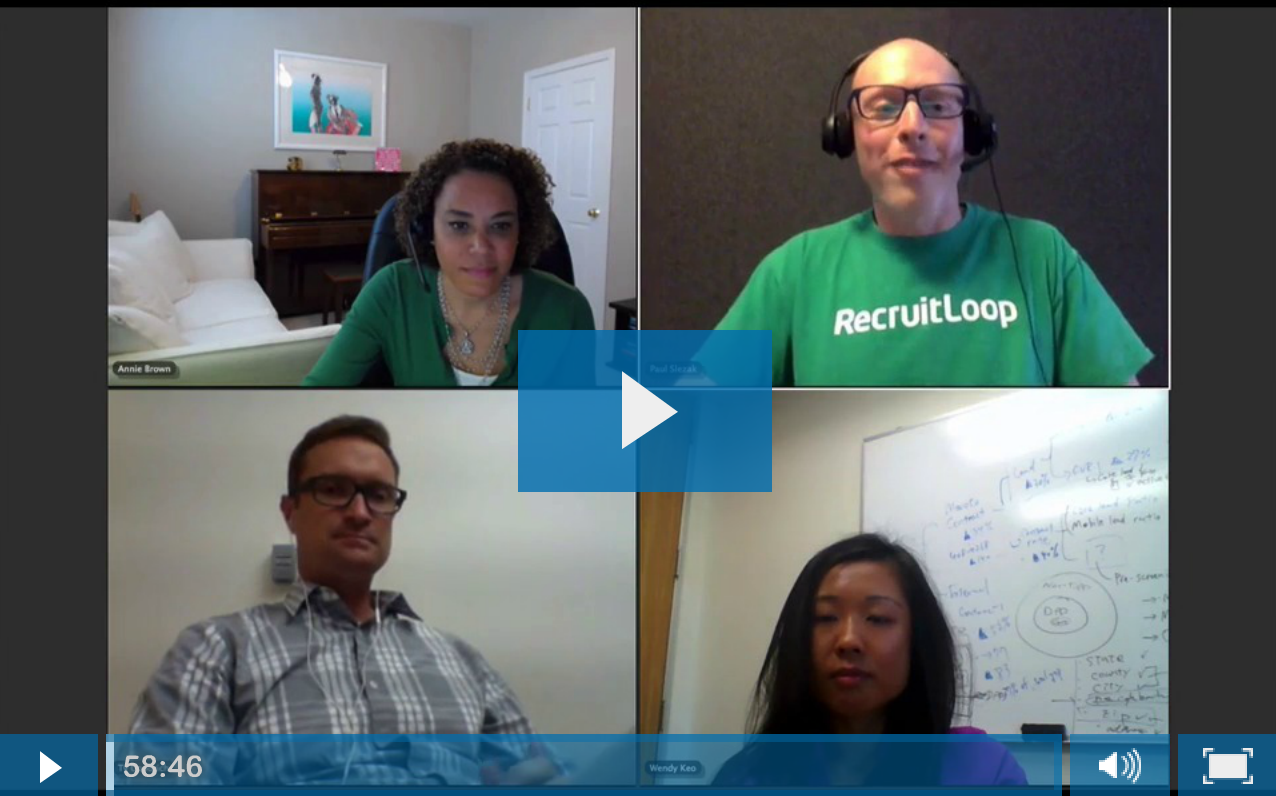Recruiting metrics are absolutely essential, as long as you are tracking the most relevant activities for you and your team … and your priorities can certainly shift depending on the circumstances.
What are the most essential recruiting metrics for you or your organization? What behaviors are you hoping to create through the use of effective recruiting metrics?
The answers to any metric driven question will vary depending on whether you are assessing or measuring certain activities from the perspective of a recruiter, hiring manager or HR specialist.
We wanted to uncover the most important recruiting metrics inside organizations of any size … from startup right through to enterprise. So we assembled a panel of experts who shared their ideas from various angles – sourcing and talent attraction; candidate selection and assessment; through to staff retention and attrition.
Key Takeaways:
-
Sourcing metrics can help determine how many potential candidates were reached out during.
-
Metrics around the candidate experience is important because you want to give a candidate a positive experience.
-
The ‘efficiency ratio’ is another (alternative) metric – especially for any talent acquisition team / hiring manager recruiting roles at different seniority and pay levels.

The Essential Recruiting Metrics
Our panel comprised of Wendy Keo – Chief of People with Movoto; Annie Brown – Global Talent Acquisition Leader with Citrix; and Ty Goodrich – Lead Staff Recruiter with JobVite.
Here’s a snapshot of what they shared.
-
Sourcing Metrics
Wendy keeps a very close eye on specific sourcing metrics at Movoto (where sourcing is handled in-house as opposed to externally). In other words she places a strong emphasis on the process before a candidate even moves into the actual recruiting funnel. Some of the specific activities she keeps a close eye on include:
-
How many potential candidates were reached out to in a particular outreach campaign?
-
What was the open rate on specific messages?
-
What percentage of sourced candidates moved through to a phone screen?
-
How many touch points were required before candidates start to respond?
Wendy also stressed that if a prospective candidate replies with a “thanks but no thanks”, it’s still a perfect opportunity to keep in touch with that candidate.
This becomes another metric in itself – ie how many candidates that agree to a phone screen or an interview, or who eventually accept a role with Movoto, initially declined the opportunity to speak with someone from the talent acquisition team.
-
-
Recruiter Performance Metrics
Ty explained how he and his team look very closely at the recruiting funnel and how the recruiting team at JobVite stick to the philosophy that “recruiting is marketing” which plays a key role in the metrics they measure.
Metrics are examined at JobVite to help spot bottlenecks in the hiring process. For example “time to fill” or assessing how long a particular requisition remains open can reveal which departments might be sitting on resumés for too long or how long an average candidate might be ‘stuck’ in the interview process. If a candidate is stuck in a ‘holding pattern’ for too long, they could decide to withdraw or actively pursue other options.
-
Metrics Around the Candidate Experience
Annie and the Talent Acquisition team at Citrix place a huge emphasis on the results of the Candidate NPS.
A Net Promoter Score questionnaire is sent to every candidate who either has a phone interview or a face-to-face interview with Citrix. The metric centers around the result of a single question: “On a scale of 1 – 10 how likely is it that you would recommend the Citrix interview process to a friend or colleague?”
Annie also believes in what she refers to as the “silver medalist phenomenon”. Much like Wendy’s “thanks but no thanks” theory, Annie and her team keep stats on how many candidates who may have been pipped at the post for one opportunity are ultimately successful in securing a different role later on. In other words the ‘silver medalists’ are an essential group in the Citrix talent pool.
-
The ‘Efficiency Ratio’ vs. the Cost of Hire
The cost of hire is something each of our panelists keeps a close eye on. Basically it is the total cost of recruiting divided by the number of hires made over a particular period of time.
You should consider these factors when calculating the cost of hiring new employees:
-
Advertisements placed
-
Setting up and maintaining social media accounts like Facebook and LinkedIn
-
The time your hiring managers spend interviewing potential employees
-
Invoices to contract recruiters or fees to external recruiters
-
Any accounting and administrative costs involved in setting up a new employee (eg contracts, pay accounts, health benefits etc)
On the other hand, the ‘efficiency ratio’ is another (alternative) metric – especially for any talent acquisition team / hiring manager recruiting roles at different seniority and pay levels.
As opposed to dividing the cost of of hiring by the number of employees, you divide the total cost of hiring by the total of all the salary packages offered to the new hires in the same period of time. This can be quite eye opening.
-
Recruiting Metrics FAQ
-
What does metrics mean in recruiting?
Recruiting metrics are the measurements that provide insights to the value and effectiveness to your recruiting process. The measurements help you have a better understanding off the time and money spent on the recruitment process.
-
Why are recruiting metrics important?
Recruiting metrics are important because it can help assess your recruitment process and how it compares to hiring trends and your competitors. It can be a great tool to evaluate your recruiting process and change anything that is needed. It also offers feedback from candidates that hiring managers can use to make changes as needed.
-
How do you measure recruitment effectiveness?
The quality of hire can help measure your recruitment effectiveness. Quality employees tend to have long term positive effects on a business. A hiring manager needs to take their time when hiring because they are more likely to hire a quality candidate that will be at the company for a long time.
Final Thoughts
Towards the end of the webinar, Ty asked the question that I am pretty sure anyone working in talent acquisition would be thinking: “Does anyone actually have a perfect system for tracking these metrics?”.
How you track your metrics is up to you. But as each of our panelists strongly agreed, it’s what you do with the information you measure that counts.
To access the full webinar recording, click below.
- Recruitment Strategies
- Talent Acquisition
- Recruiting Methods
- Social Media Recruitment Strategy
- Making a Recruitment Video
- Sourcing Talent
- Social Media Recruitment Strategy
- Talent Attraction Strategies
- Recruitment and Selection Policy
- Recruitment Goals and Objectives
- Linkedin Recruitment Tips
- Career Fair Checklist
- How To Add Value As An In-house Recruiter
- Linkedin Recruiting Secrets
- The Myth Of Guaranteed Placement
- How To Source Multi-generational Talent
- The Recipe For Great Recruitment
- Why Sourcing Isn't Recruiting
- How To Build A Talent Pipeline On Linkedin
- The Modern Recruiting Workflow
- How To Wite Cold Emails To Passive Candidates
- Essential Recruiting Metrics
- How To Recruit Talent At A Conference
- Cold Recruiting Emails To Candidates
- How To Maintain An Active Talent Pool
- How To Write LinkedIn Messages To Candidates
- Recruiting Metrics That Matter
- How Blind Hiring Can Contribute Workplace Diversity
- Why Internal Recruitment Is The Best Place To Start
- Recruiting Alternatives Linkedin
- How To Create A Recruitment Plan






